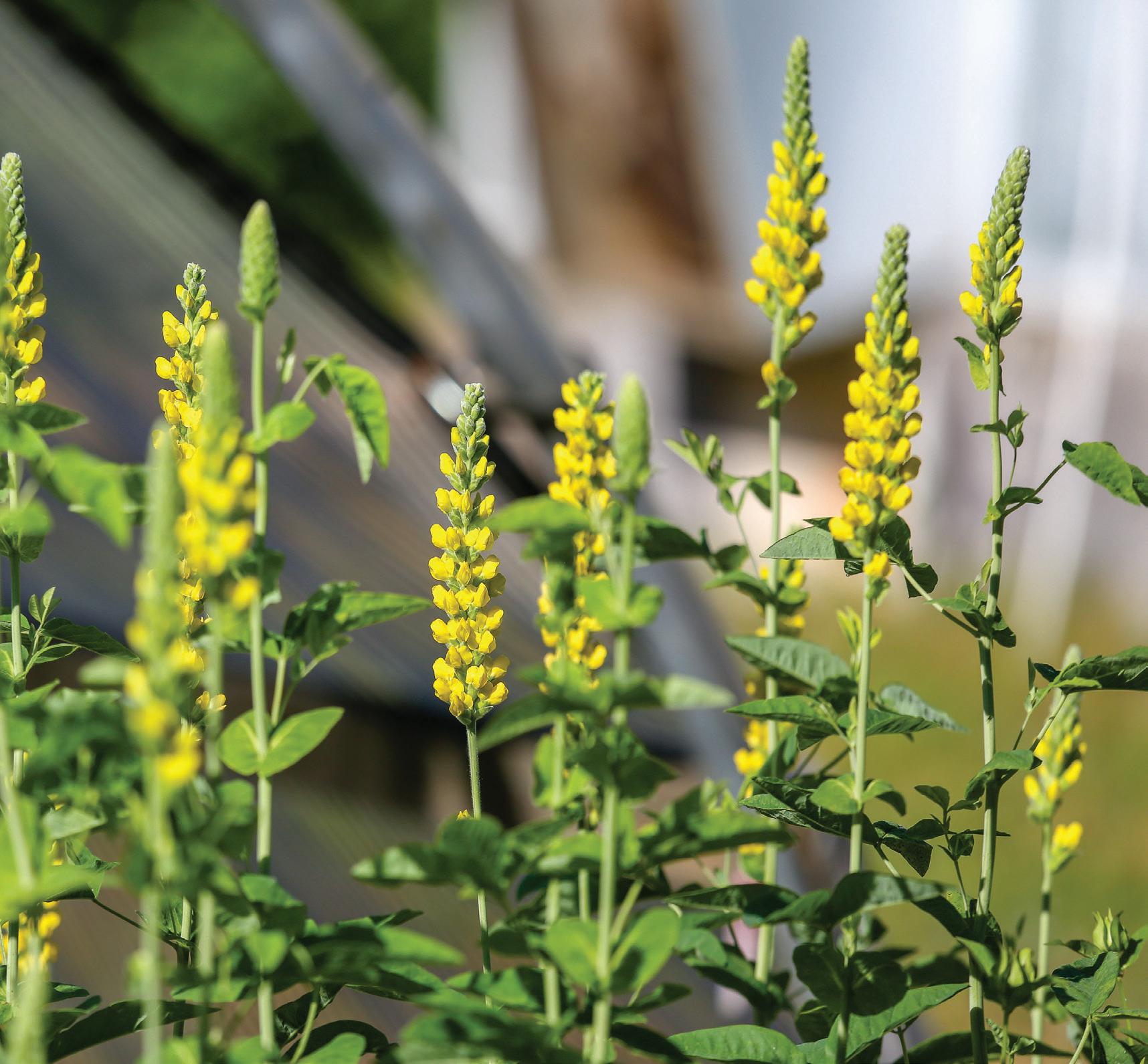
3 minute read
SCIENCE & CONSERVATION
State Botanical Garden of Georgia Conseravtion team
Advertisement
The Georgia Pollinator Plants of the Year program annually recognizes four topperforming landscape plants that support pollinators and grow beautifully in a garden. Plants are recognized and promoted from the following categories: spring bloomer, summer bloomer, fall bloomer and Georgia native.
Nominations are solicited from gardeners throughout Georgia and are determined by a selection committee based on each plant’s horticultural value, ease of propagation and ecological significance. The selection committee chooses the winning plants a year in advance, providing interested growers a full year to increase their stock of these plants.
Here are the selected pollinator plants for 2022:
Spring bloomer – Carolina lupine
Thermopsis villosa
About: Carolina lupine is a 4-foot-tall perennial wildflower in the pea family. In spring, this plant has tall spikes of eye-catching canary yellow flowers. Growing conditions: Prefers full to part sun in well-drained garden soil with average to high moisture. Conservation value: Supports many native bees and other pollinators. Leafcutter bees utilize the foliage for nesting.
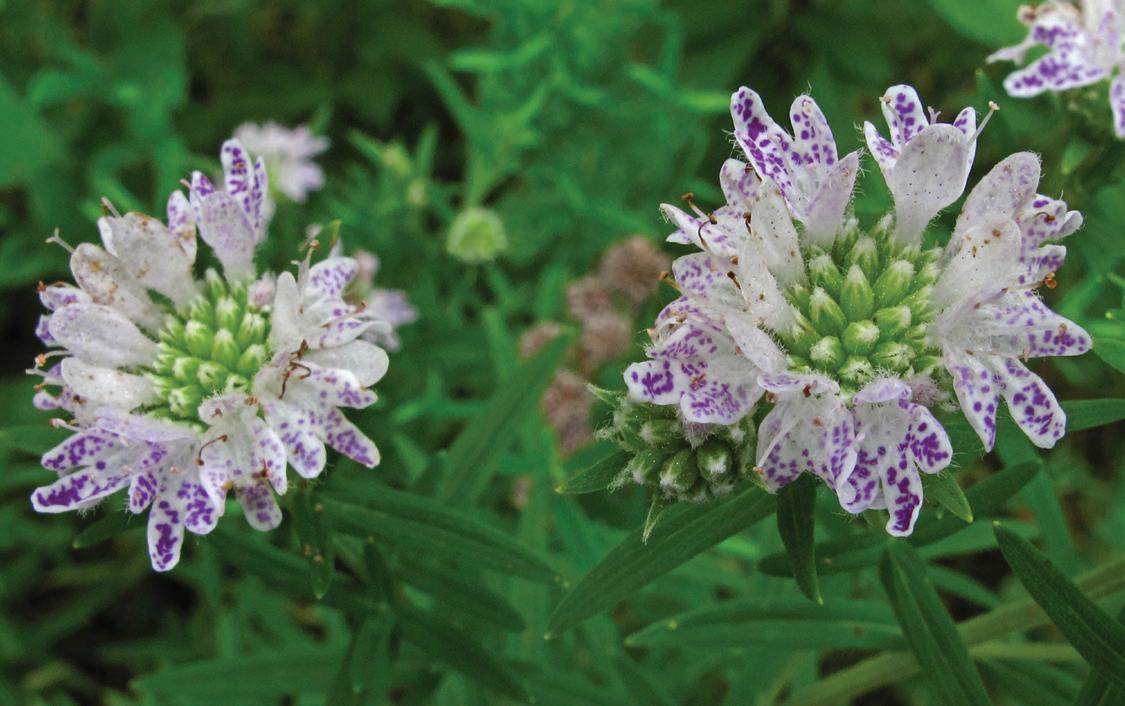
PYCNANTHEMUM INCANUM P. VIRGINIANUM
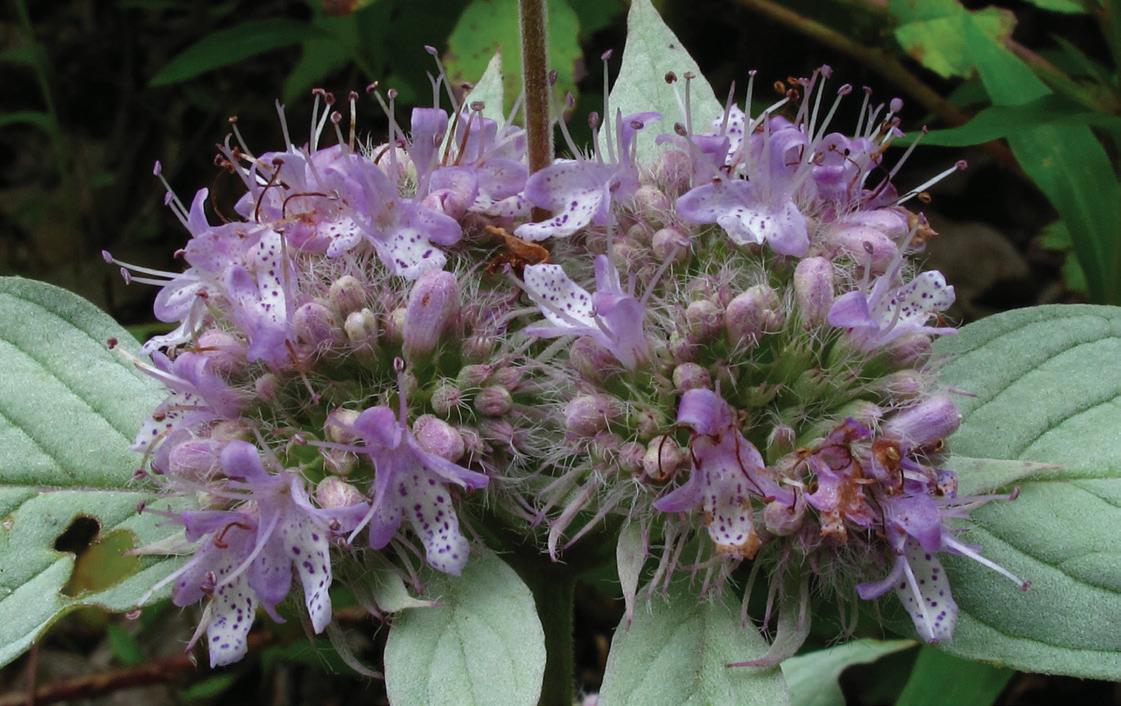
Summer bloomer – Mountain mints
Pycnanthemum species: Pycnanthemum incanum, P. flexuosum, P. muticum, P. tenuifolium, P. virginianum
About: Each of the selected mountain mints are 3 to 4 feet tall, with long-lasting white summer blooms that attract many different pollinators. Conservation value: Supports many native bees, wasps and butterflies.
Fall bloomer – Blue mist Conoclinum coelestinum
About: Blue mist is a perennial wildflower in the sunflower family that grows 3 to 4 feet tall with bright blue flowers from late summer into fall. Growing conditions: Prefers full to part sun in well-drained to average garden soil with high to low moisture. Conservation value: Supports many native bees, including leafcutter bees, and butterflies.
Georgia native – Coral honeysuckle
Lonicera sempervirens
About: Coral honeysuckle is a perennial blooming vine with woody twining stems that bloom with tubular red and yellow flowers throughout much of the year. Conservation value: Supports bumble bees, small bees, hummingbirds and butterflies. The leaves support the larval stage of clearwing moths and azure butterflies. Finches, thrushes and robins feed on the fruits in winter.
These species are beautiful in flower, leaf and structure with multi-season interest. They are great garden performers. They are all native to Georgia, and native plants support local wildlife with great abundance and important specific relationships.
It is the garden’s mission to support growers in their production of native plants. There is time pressure to get native plants that support wildlife back on the land in Georgia. Science has shown planting native plants even in deeply isolated sites, far from natural areas, supports wildlife through their lifecycles. Monarch butterflies find native plants on the Highline in New York City, surrounded by miles of concrete. Georgia bees, butterflies and birds will come to your garden, too, if you include native Georgia plants. Planting these pollinator plants will make for attractive and ecologically relevant displays. For more on this, check out Doug Tallamy’s latest book, “Nature’s Best Hope: A New Approach to Conservation That Starts in Your Yard.”
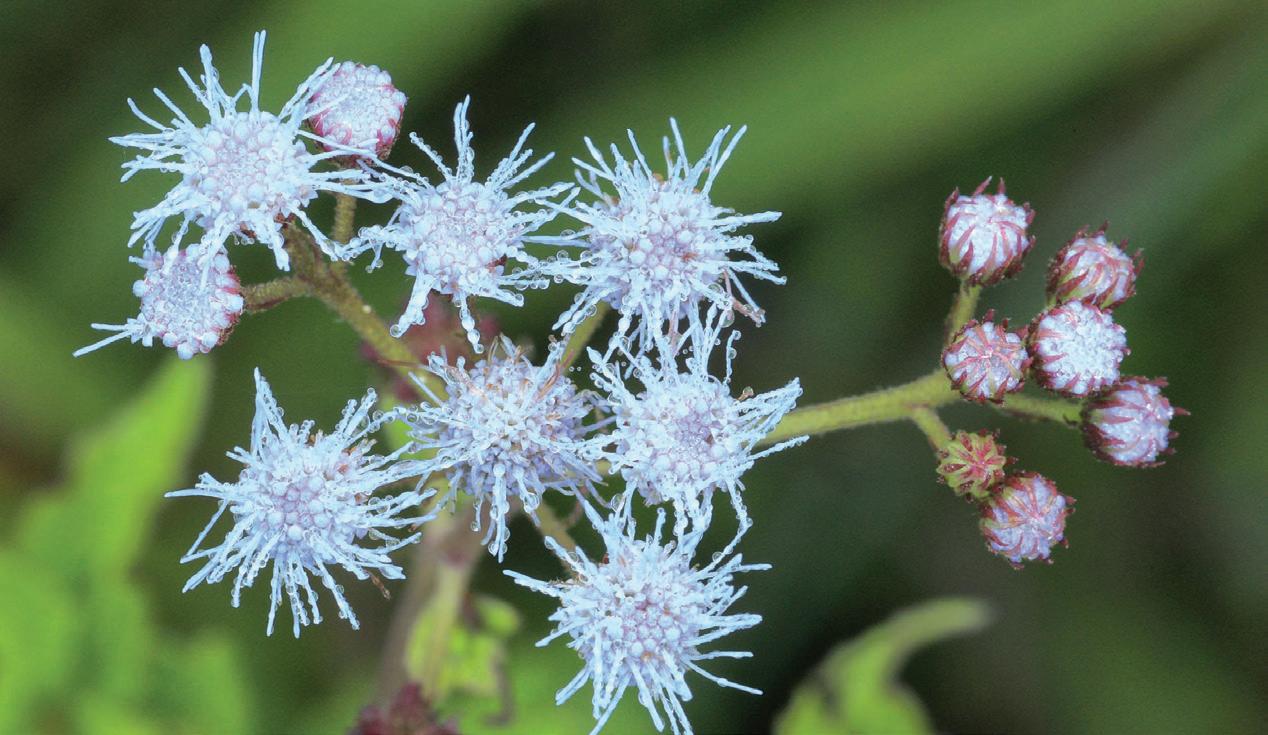
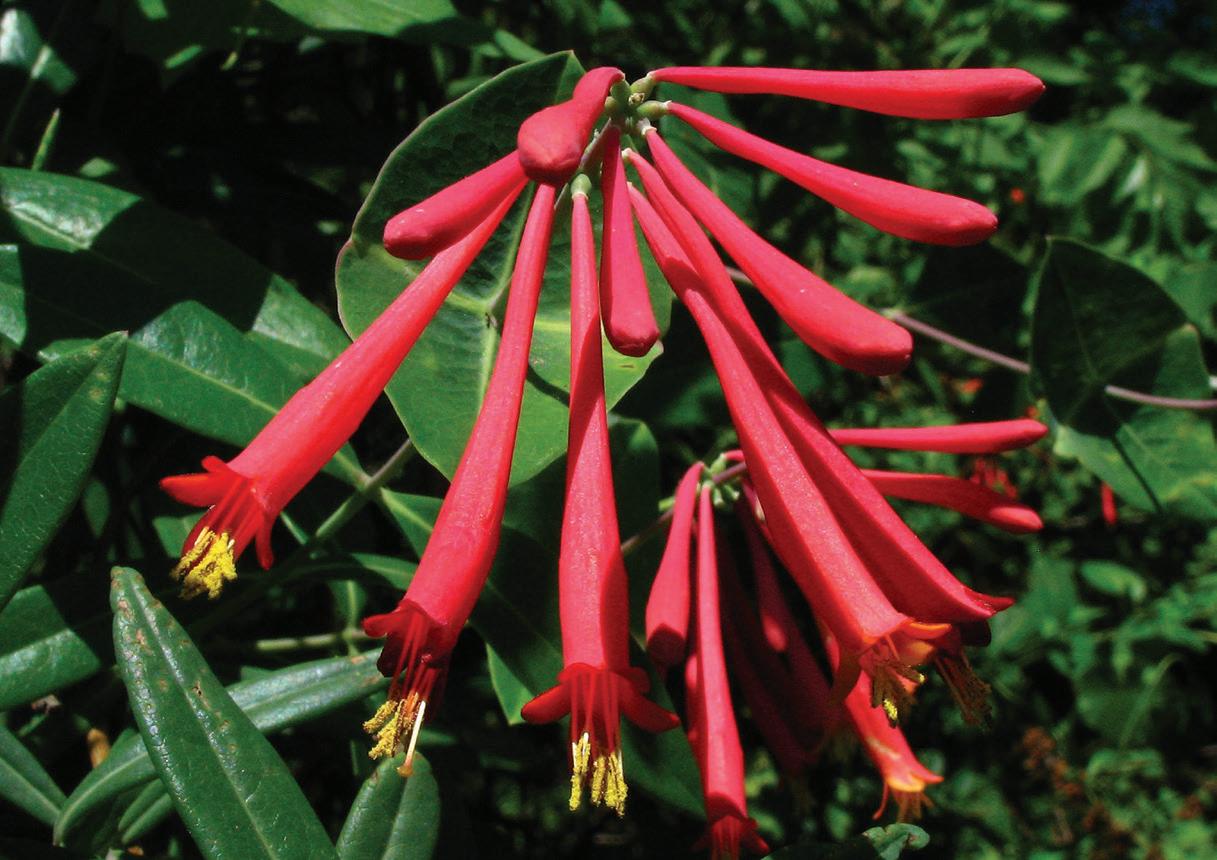
Becky Griffin, UGA Extension community and school garden coordinator, will be announcing the 2023 pollinator plants of the year at this year’s Wintergreen conference, hosted by the Georgia Green Industry Association. Details on those species will be announced at this time next year.
For more information about the pollinator plants of the year program, and to find a directory of native plant nurseries, visit https://t.uga.edu/649.





